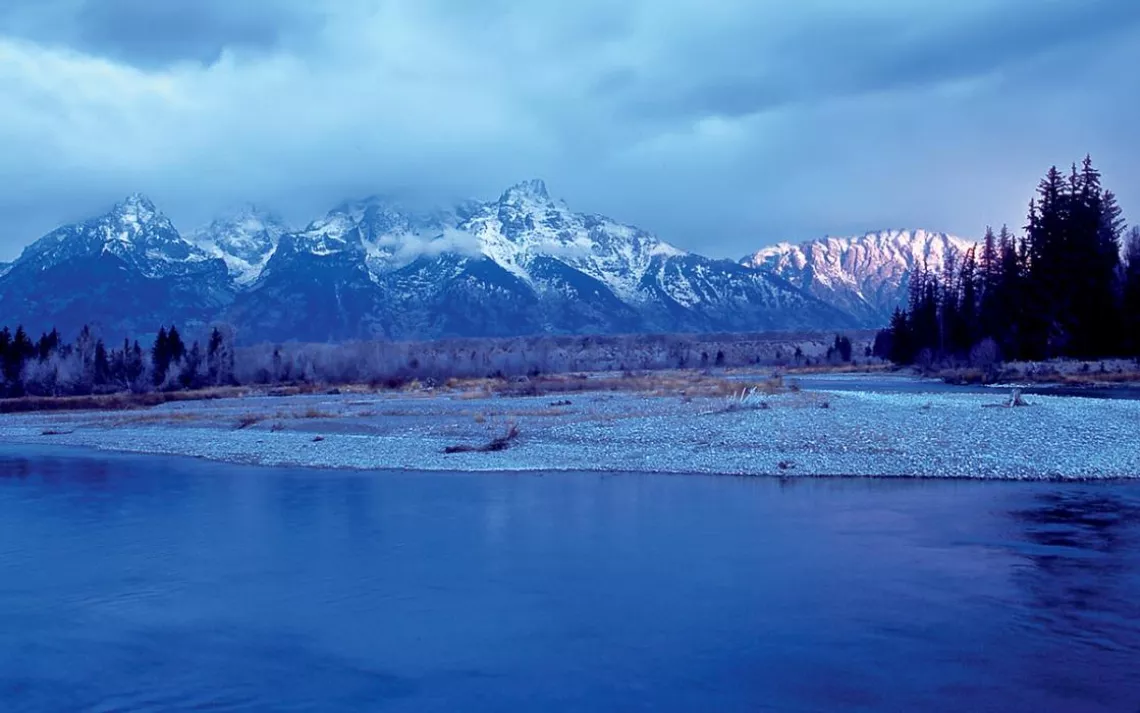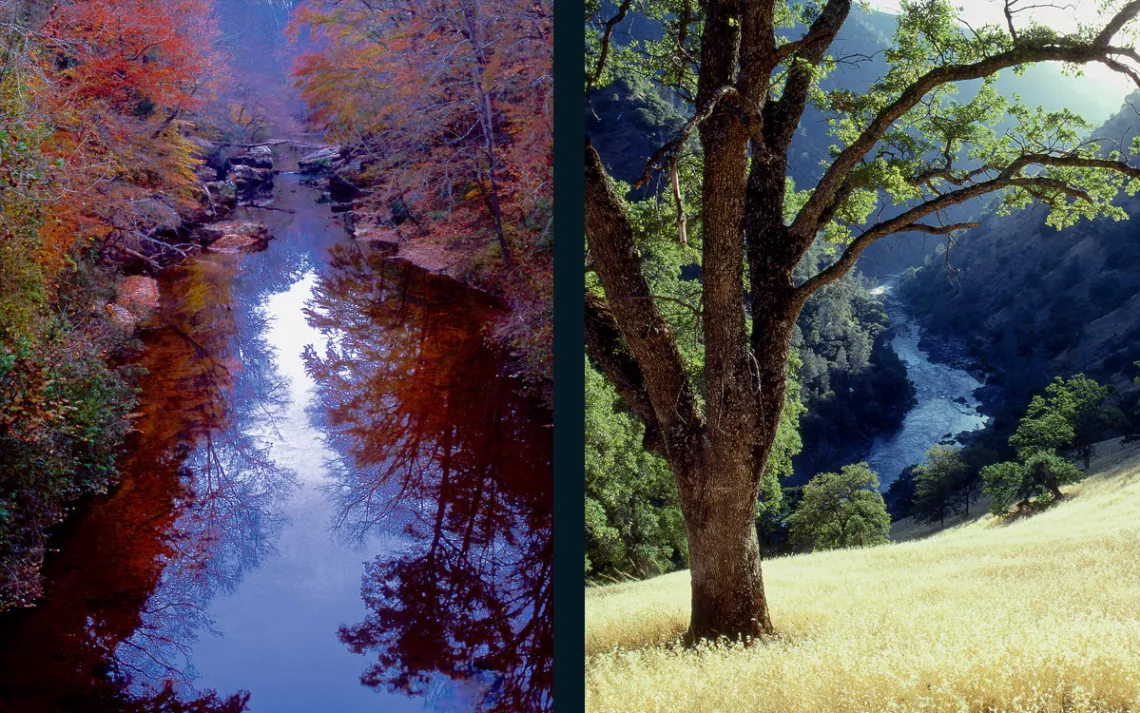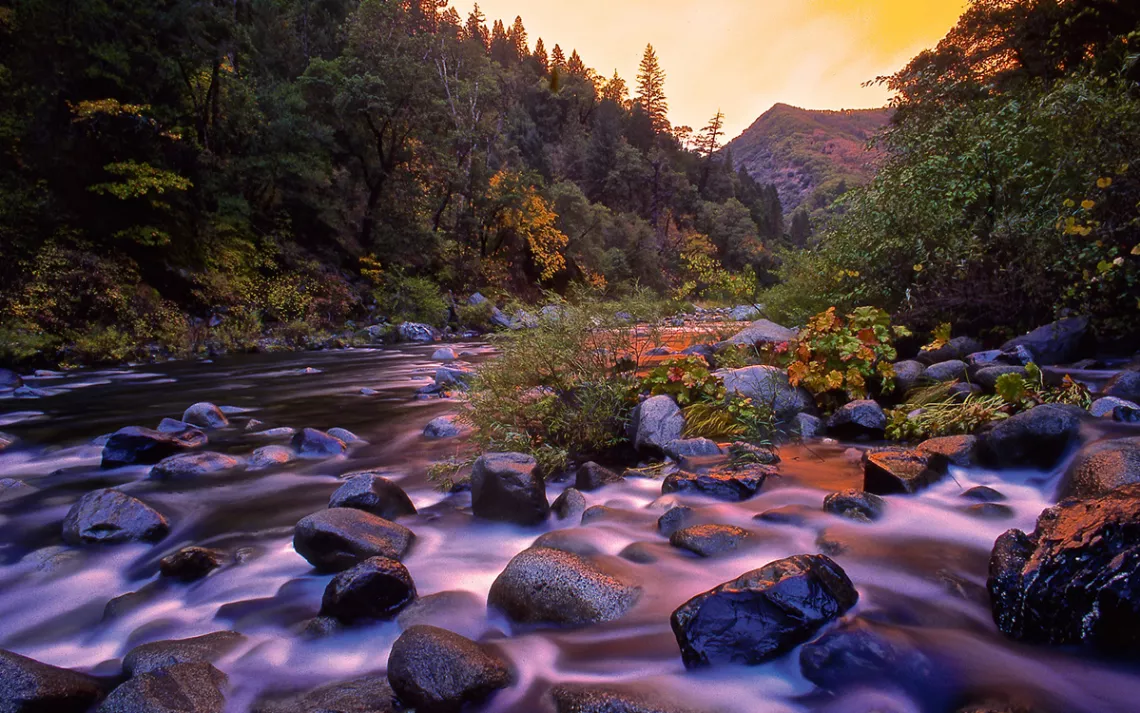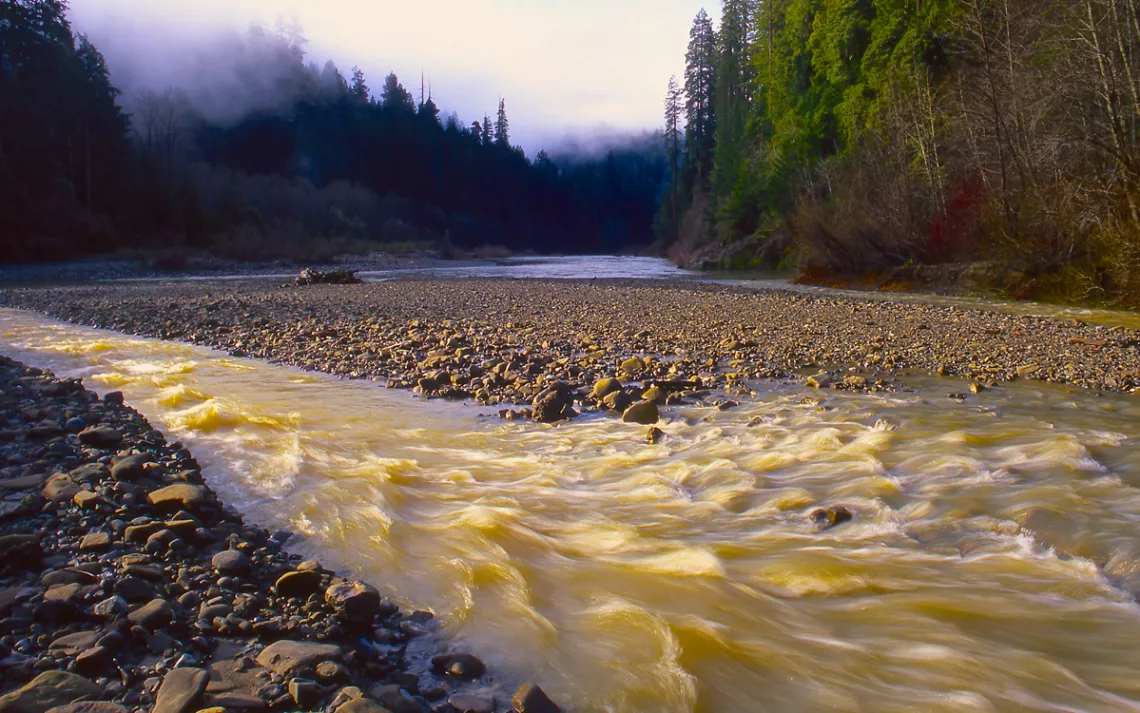In Celebration of the 50th Anniversary of the Wild and Scenic Rivers Act
Today, 300 major U.S. rivers and their tributaries are protected by the law

The Snake River in Grand Teton National Park
RIFFLING ALONG THE BOUNDARY OF GLACIER NATIONAL PARK, the Flathead River's North Fork twisted and turned past cottonwood groves framing views of Rocky Mountain peaks on the horizon. I paddled my canoe across deep pools where cutthroat trout lurked. Grizzly bear tracks in the sand issued a warning: Camp somewhere else. In the places where the current calmed, I let my boat drift and delighted in the underwater cobbles—a mosaic of red, black, blue, and white. The water was so clear that it felt like I was floating on air. For me, traveling down a river is the ultimate way to experience the wild earth and its wonders.
The Flathead's clean water and wildness are extraordinary in today's world, and they might not exist if not for one of the great achievements in U.S. conservation history: the National Wild and Scenic Rivers Act, which turns 50 this year.

Left: In Alabama, the Sipsey Fork of the West Fork River flows through the southernmost reaches of the Appalachian Mountains. Right: The Sierra Nevada foothills section of the Tuolumne River was designated as wild and scenic, preventing the construction of a dam.
It was along the Flathead River that the idea for a national system of protected rivers germinated in the minds of John and Frank Craighead. The twin brothers had pioneered the modern era of wildlife biology in the late 1950s and 1960s as they charted the decline of grizzly bears in the Northern Rockies. The Craigheads knew that the Middle Fork Flathead was the wildest river remaining in Montana. So when they learned about the proposal to build the Spruce Park Dam there, they warned that it would flood the area's wilderness canyons, forests, and meadows under hundreds of feet of flatwater. In a 1957 issue of Montana Wildlife, John Craighead made the case for protecting the Flathead as well as other rivers nationwide: "Rivers and their watersheds are inseparable, and to maintain wild areas we must preserve the rivers that drain them."
At first the cause to protect wild rivers seemed hopeless. The era of building big dams was in full swing throughout the United States—at least 70,000 dams had already been built and thousands more had been proposed or planned or were under construction, with virtually no rivers off-limits. But the Craighead twins got a positive reception from officials in the Interior Department, then took their idea to Stewart Udall. Before becoming interior secretary, Udall had served as a U.S. representative for Arizona and had been an ardent supporter of dams. But now—encouraged by the Craigheads and river supporters from the Allagash River in Maine and the Current River in Missouri—Udall agreed that "balance" was needed in the federal government's approach to water development.

The Middle Fork Feather River in California was among the original wild and scenic rivers.
By the time the proposal reached the floor of Congress, it enjoyed a level of bipartisan support that is unheard of today. The Senate voted unanimously for the Wild and Scenic Rivers Act; in the House, only seven representatives voted against the measure. The bill, signed into law by President Lyndon B. Johnson on October 2, 1968, declared "that certain selected rivers of the Nation . . . shall be preserved in free flowing condition, and that they and their immediate environments shall be protected for the benefit and enjoyment of present and future generations."
While the legislation originally protected just 12 rivers and their tributaries, it established a protocol for adding other rivers to the system. Conservationists nationwide began campaigns to safeguard their local streams, and over the next 50 years, citizens' efforts to add rivers to the Wild and Scenic Rivers System blocked dozens of unneeded dams. All three forks of the Flathead were included in the system in 1976. Urgent threats of dams and diversions were halted with the designations of the Tuolumne, Merced, and Kings in California, the Snake in Idaho and Oregon, the Chama in New Mexico, the Niobrara in Nebraska, the Delaware in Pennsylvania, and the Farmington in Connecticut, among others. Today, 300 major rivers and tributaries that flow across nearly 13,000 miles enjoy protection under the law.
Like the Organic Act of 1916, which established the National Park Service, and the Wilderness Act of 1964, the Wild and Scenic Rivers Act represented a pathbreaking approach to conservation. Yet the measure is unique (curious, even) in being the only U.S. conservation law that calls for protection of a certain category of landscape: undammed rivers with their integral valley or canyon corridors. There are no similar laws designed specifically to protect mountains or forests or deserts or lakes.

The Van Duzen River joins Northern California’s Eel River not long before it empties into the Pacific Ocean.
A special law for rivers seems fitting given their central importance—wild or otherwise—in our lives. Our water supplies come from rivers and from groundwater that's inextricably connected to surface flows. Rivers are key corridors for wildlife and are essential to a majority of species at some point in their life cycles, from mayflies low on the food web to grizzly bears at the top. Rivers are the migratory pathways and spawning waters for salmon, steelhead, shad, and other fish. Rivers and streams are often described as the earth's veins and arteries, and they are, in fact, the essential ecological connective tissue. Rivers bind the landscape together.
Rivers quench our thirst and provide a retreat that can also dampen our level of stress. They draw us to their flow to paddle, to fish, to hike along the shores, or to simply relax at the water's edge. For the more adventurous among us, the sound of whitewater is like a siren's call. Wild and scenic river designations are intended to protect not only wildness and natural scenery but also all the "outstandingly remarkable" qualities of our rivers that are specified in the act—fish, wildlife, historic sites, geologic features, recreation opportunities.
The protection of these wild treasures doesn't happen naturally; it requires commitment from people who care. Every river added to the system reflects the vision and determination of conservationists who followed the path of the Craighead brothers. Today, those efforts continue. A coalition in Montana is striving to add 700 miles of streams to the Wild and Scenic Rivers System. In Washington, another campaign aims to protect 19 rivers plunging from the Olympic Mountains to the sea. Conservationists are waging similar efforts for the Gila River in New Mexico, Deep Creek in Colorado, and the Nashua River in Massachusetts.
On the 50th anniversary of this visionary law, take a moment to reflect on the importance of rivers in your life. Appreciate what has been accomplished, beginning in 1968 and continuing onward in spirited campaigns by countless advocates through five decades. With foresight and selflessness, somebody loved each of our wild and scenic rivers enough to save it for the generations to come.
Now it's our turn to do the same.
This article appeared in the July/August 2018 edition with the headline "Untamed Beauty."
 The Magazine of The Sierra Club
The Magazine of The Sierra Club



